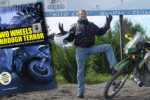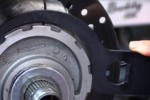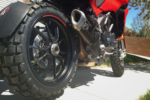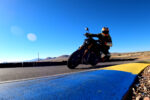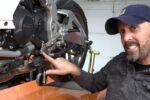In order to keep up with the rapid pace of tire development, Continental has just wrapped up three and a half years of work on their newest hypersport tire; the Sport Attack 3. Unlike many of the competitor’s tires that are rebadged race tires offered to street riders, Continental promises their newest hypersport tire was designed for the real-world street rider who spends most of their time running local canyons and participating in track days.

Continental was also quick to point out that the SA3 is much more than a revised or updated Sport Attack 2, but an entirely new tire from the carcass up. A great deal of attention was placed on improving the feedback, feel and traction levels of the front tire. We had the opportunity to visit their top-secret testing facility about an hour and a half west of San Antonio, just off route 117 near Uvalde, Texas, to sample Conti’s new hoops.
The Brochure
But before we get into that, a little bit about the tire. We sat down with Malte Bigge, the Product Manager for the Sport Attack 3. Bigge was quick to point out that the Sport Attack 3 was designed to work in real-world conditions. “It works in all conditions,” said Bigge. “It works well when it’s a little bit cold when the streets are a little bit wet, and, of course, even on the race-track.”
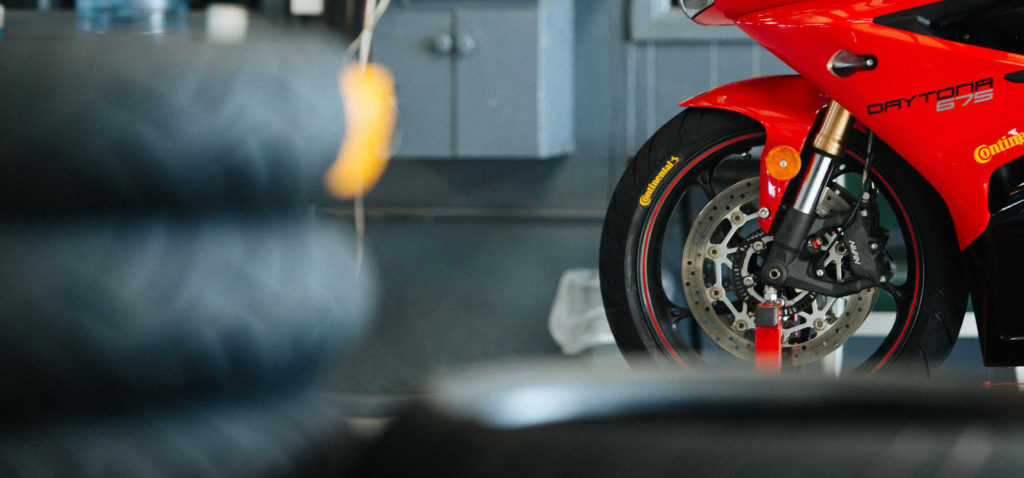
Grip Limit Feedback
The big news with the new tire is a feature Conti is calling “Grip Limit Feedback.” The idea is that as the tire reaches max lean angle and nears its max adhesion limits, rather than just stick and stick until the bitter end and all adhesion is exhausted, the tire is designed to offer up small, gentle slides to warn the rider that it’s time to reduce lean angle or reduce rates of forward velocity with the goal of giving the rider more information to work with.
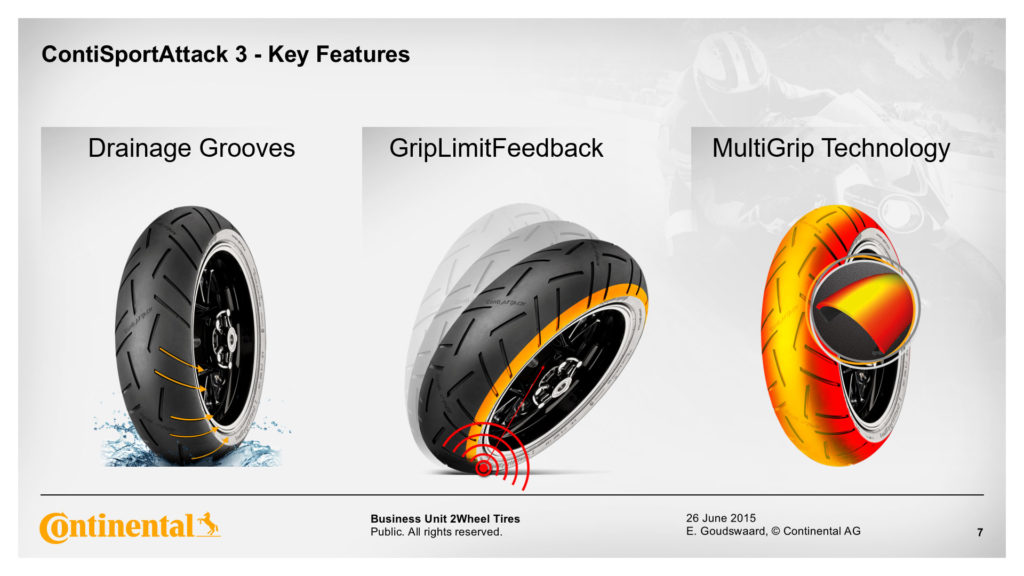
This has been accomplished with the how Continental has integrated silica and their continued to use “Multi-Grip” or “Continuous Compound Technology”. By curing the tire it at different rates and temperatures, the center of the tire is less flexible and more resistant to wear, while the shoulder of the tire is softer, grippier and more compliant. Because this is done through a curing process, the rubber changes gradually from the center to the shoulder rather than with defined steps.
Performance and Wear
Continental claims to have improved the tires wet and dry weather performance by revising the tread pattern. Gone are the traditional “V” shaped-sipes that have adorned most other continental “Attack” tires through the years. So, sipes or grooves in the tire are good for wet weather. They channel water out from under the tire, but siping reduces the amount of rubber on the ground and allows the tire to flex, which increases the rate of wear.
Astute readers will notice that the new SA3 has somewhat asymmetric sipes running around the edge of the rear tire. Continental says this new tread pattern allows for ample drainage in wet conditions while still providing a large contact patch in dry conditions. When fully upright, you get all rubber with no sipes, all land and no sea, but as the tire leans, the land-to-sea ratio increases to 15-percent, and then back down to about 8-percent at full lean. The sipes have also been designed to push the water away from the tire. In other words, you get the most siping (sea) at the lean angles you are most likely to encounter during wet weather riding, but still ample amounts of rubber (land) for wear and grip while upright and at more extreme lean angles.
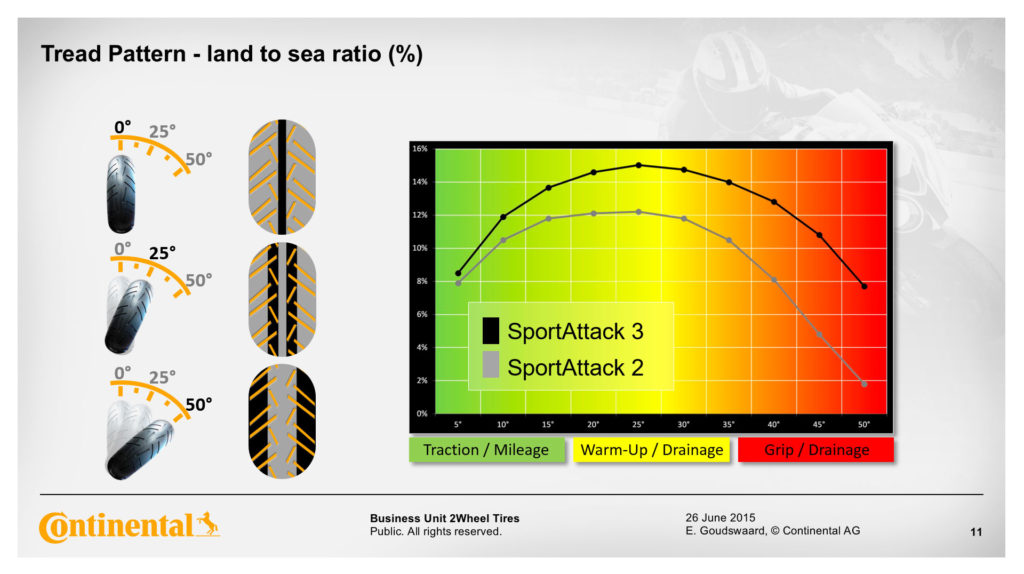
Conti says the new tread pattern helps improve the tire’s overall durability by 15-percent from the Sport Attack 2. Additionally, they have retained the “Traction-Skin” that eliminates the slippery mold release that traditionally needs to be scrubbed off during a break-in process on new tires.
And finally, Continental continues to use the 0-degree belt technology they’ve been using on Attack tires since the original Road Attack. The tires belts run at the same angle as the sidewall resulting in consistent tire flex and handling characteristics.
But enough of that, let’s get down to brass tacks and talk about how the tire works. Conti’s test facility is enormous; 5,000 acres enormous in fact. The tires would be tested on a smaller “handling” course that would stress the tires ability to tip in, trail-brake and whatnot, while a second “high-speed” course would allow for some proper tire thrashing to take place. A fleet of bikes ranging from everyday 600’s to liter bikes were at our disposal to see how the tire behaved on multiple platforms.
First things first, we warmed up on the smaller “handling course” – older, polished asphalt, with bumps and undulations, very similar to most local canyon roads, with lots of decreasing radius bends, a giant increasing radius sweeper and a long straightaway. Even with the cool March morning temperatures, the tires warmed up quickly and allowed for a spirited pace and worthy lean angles promptly and without any fuss.
The smaller track was a great way to get acquainted with the tires profile, tip in characteristics and flex, but what was most noticeable about the new Sport Attack 3 was how easy it was to simply forget about the tire altogether. This may sound a little underhanded, but it’s meant as high praise actually. Riding on an unfamiliar bike, on an unfamiliar track and the tires just did their thing allowing the rider to simply ride the motorcycle and look for apexes.
All the decreasing radius corners required lots of trail-braking that really tested the new front tires abilities. The Sport Attack 3 front tire profile has changed a bit, the initial tip in is a little bit slower than the Sport Attack 2 but retains the same planted and stable feel while leaned over. The new front tire also feels more compliant than the front tire on the SA2, offering a lot more feedback. Almost immediately I felt confident that I was aware what the front tire was doing and how it was going to react to my inputs and surface irregularities.
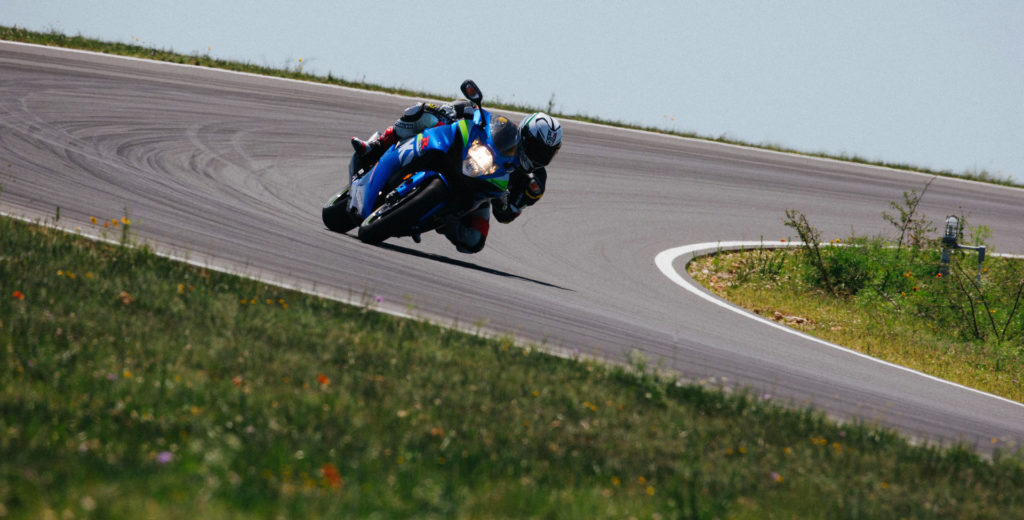
The rear tire was practically invisible and remained planted even under aggressive application of the throttle through the endlessly long left-hand sweeping corner that exited onto the wide straight-away. The rear tire is good, but the front tire is what shines. By the end of the third session on the smaller track, I found myself pushing the front tire harder and deeper into corners than any street rider ever should. However, this should give every street rider confidence that if they find themselves in a corner faster than they feel comfortable going, trusting that the front tire can handle it is some very reassuring peace of mind.
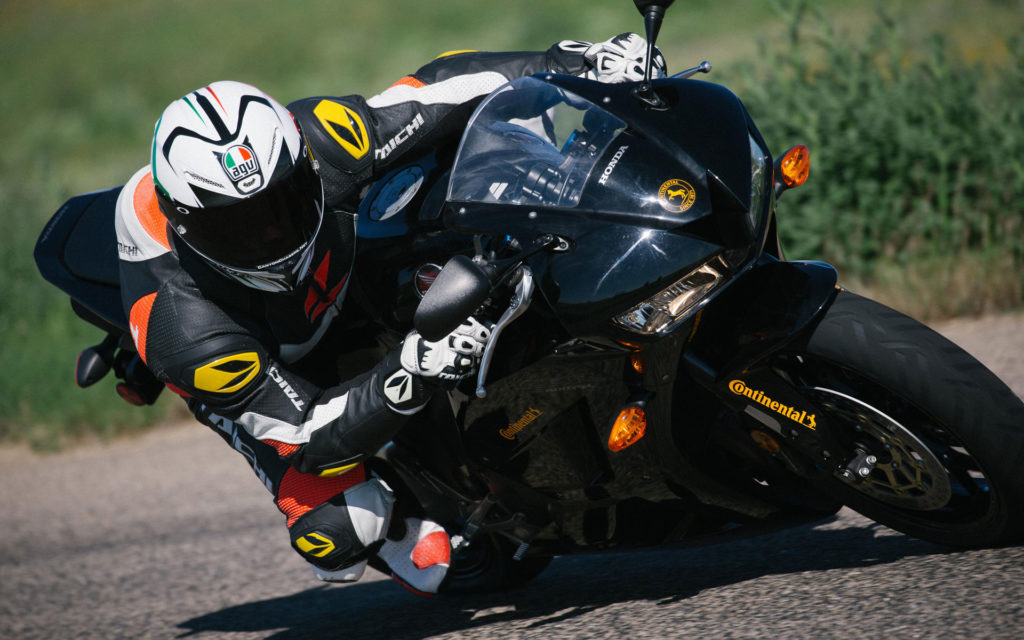
The high-speed course is just that; fast and flowey with plenty of elevation changes and a handful of mean decreasing radius corners thrown in to keep you on your toes. While the smaller, “handling-course” simulated local canyon runs and street rides, the fast course showed that the tire is capable of the rigors of track day riding. Even at higher speeds the tire maintained a neutral composure through fast transitions, downhill trail braking and hard drives out of corners. Fast transitions were a little more deliberate than the older Sport Attack 2, but also more forgiving of the occasional sloppy handlebar input.
It was on the high-speed course that I was able to get a sense of the “Grip Limit Feedback.” In the fastest of corners or while braking deeply into a corner the tire would start to feel like it was starting to drift, as though it was suffering a lack of edge grip. It was an unobtrusive and gentle reminder that we were on street tires, running street pressures recommended by the bike manufacturers. I suspect if we were to drop pressures for track-riding, more performance could have been extracted from the tires. But suffice to say, the speeds, lean angles and grip we were enjoying with street tire pressures was undeniably impressive.
Tire Pressure Recommendations
- Track
- Front: 30psi (2.1 bar)
- Rear: 26psi (1.8 bar)
- Street
- Manufacturer Recomended Pressure
Summary
At the end of the day I spoke again with Malte Bigge and asked why a rider should choose the Sport Attack 3 over all the other hypersport tires available on the market. He said, “We built the tire so that you could trust the front tire from the first meter, and trust in the front tire means the riding is fun. The front tire just gives amazing feedback. You can really brake deep into the curve and this just gives you so much confidence. The grip level is just amazing.”
We were really impressed with the new Sport Attack 3. The fact that we were running that pace and those speeds on street tires with street tire pressures made the tire even that much more impressive.
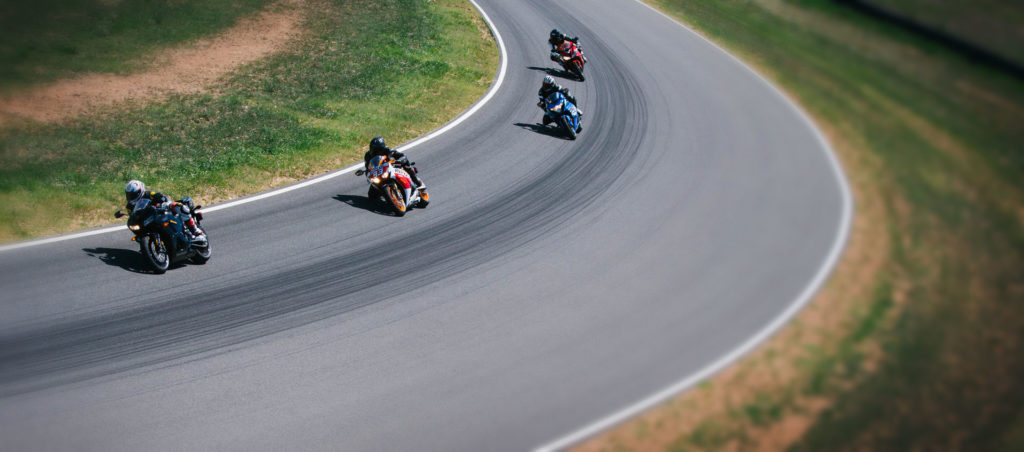
With all the recent tire development, Conti was honestly falling behind with front end feel and edge grip, but these new sneakers address those concerns. The handling is neutral and predictable and if the tire wears as well as it’s predecessors then it’s going to offer some great durability as well.
Riders can rest assured that the Sport Attack 3 delivers a great balance between tire life (we expect), handling and grip. Perfect for the everyday sport bike rider who expects a world of traction; wants a tire they can trust in the canyons, a tire they can take to work or school as well as one that can endure track duty as well.
For more information, visit the Continental Sport Attack 3 webpage.
